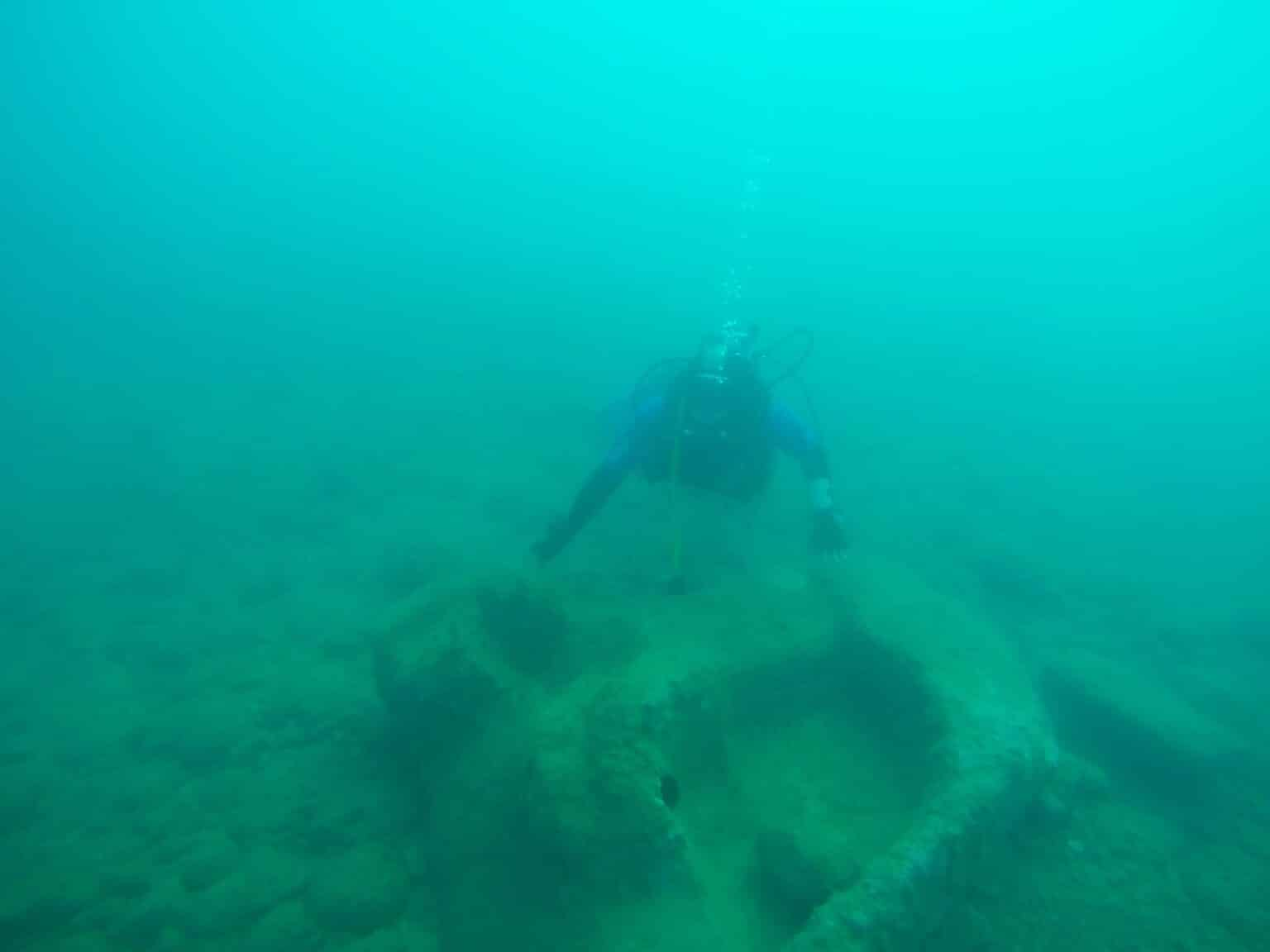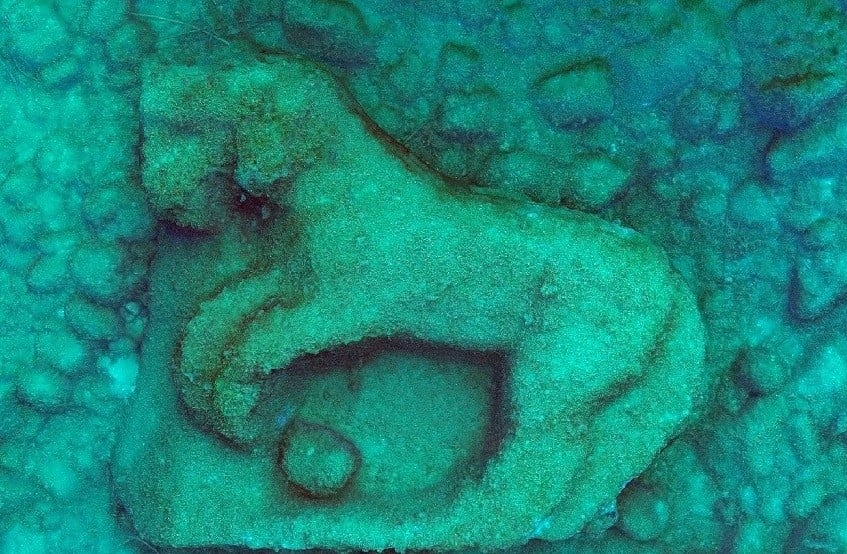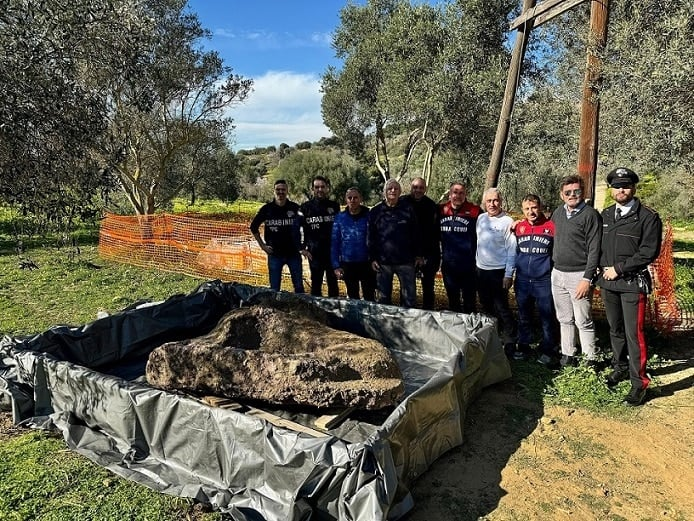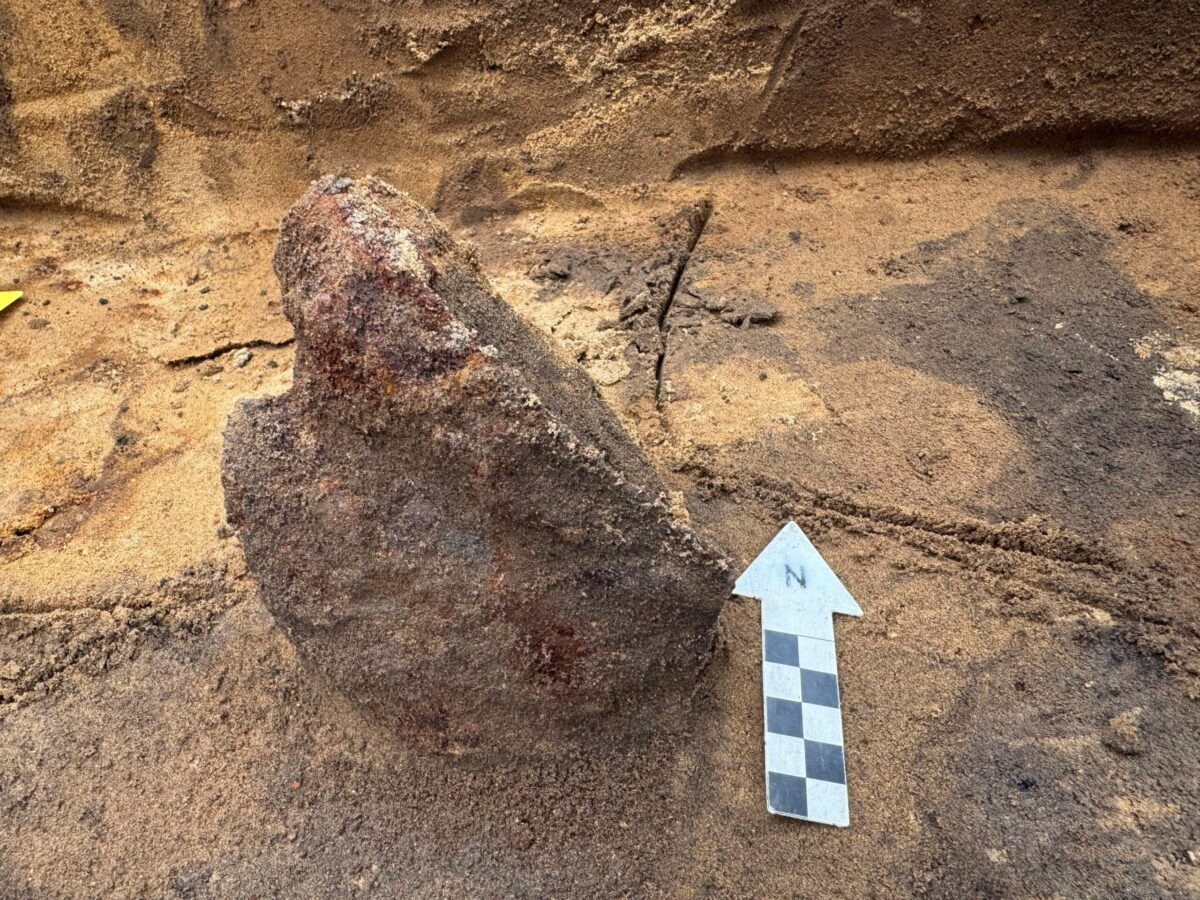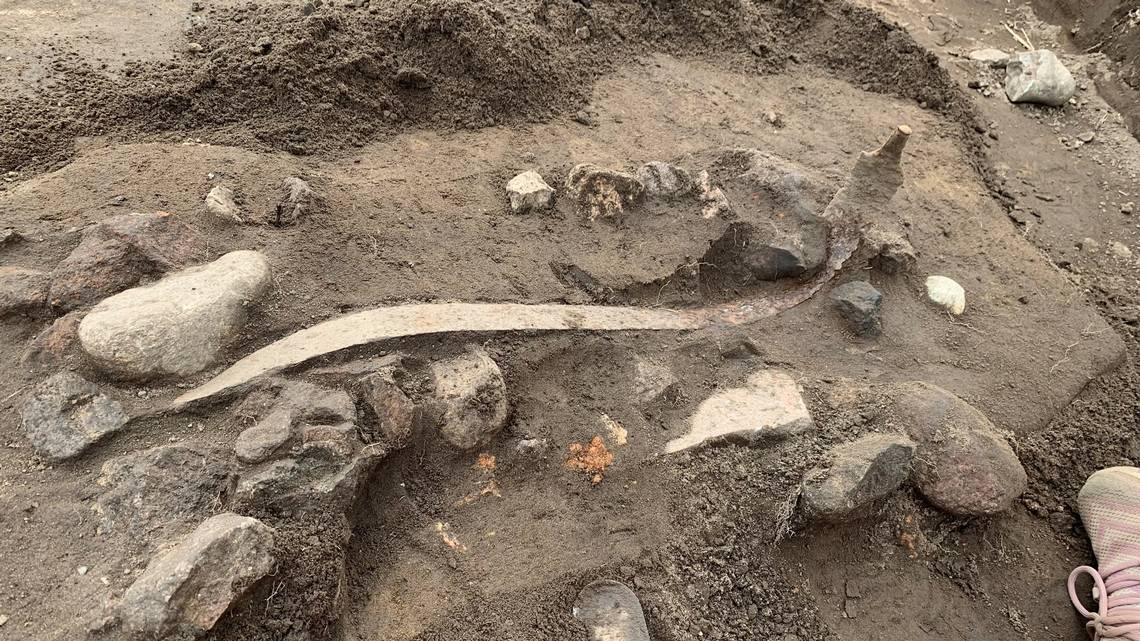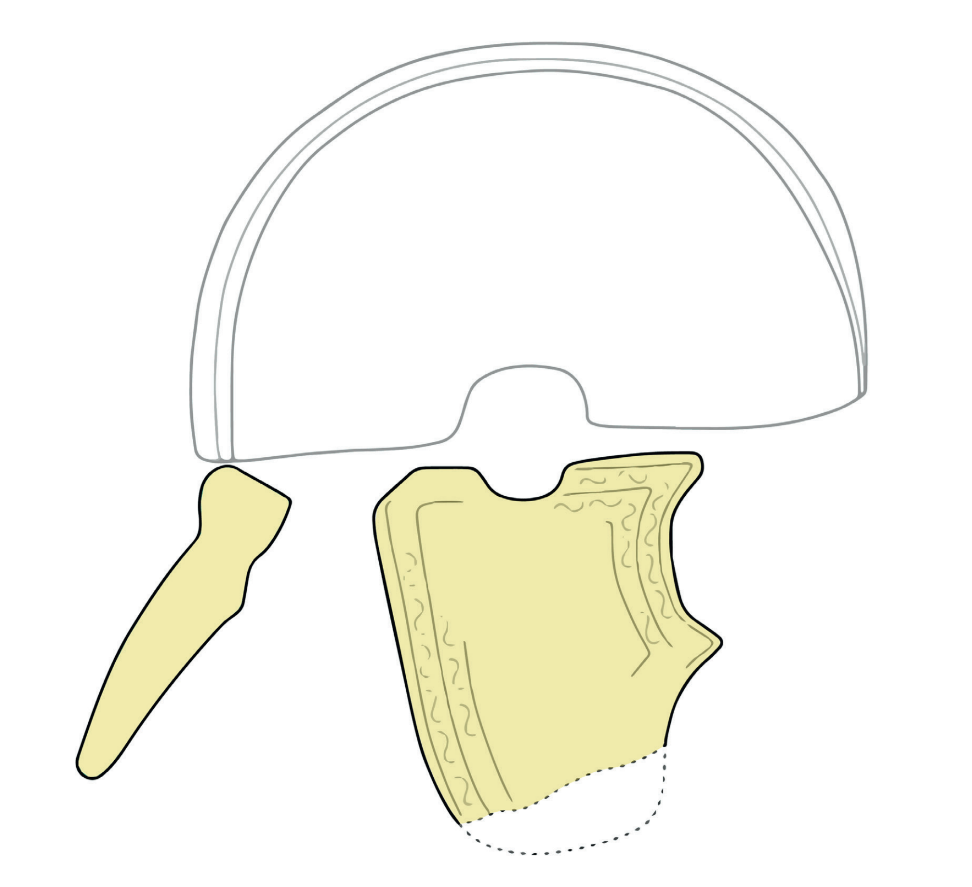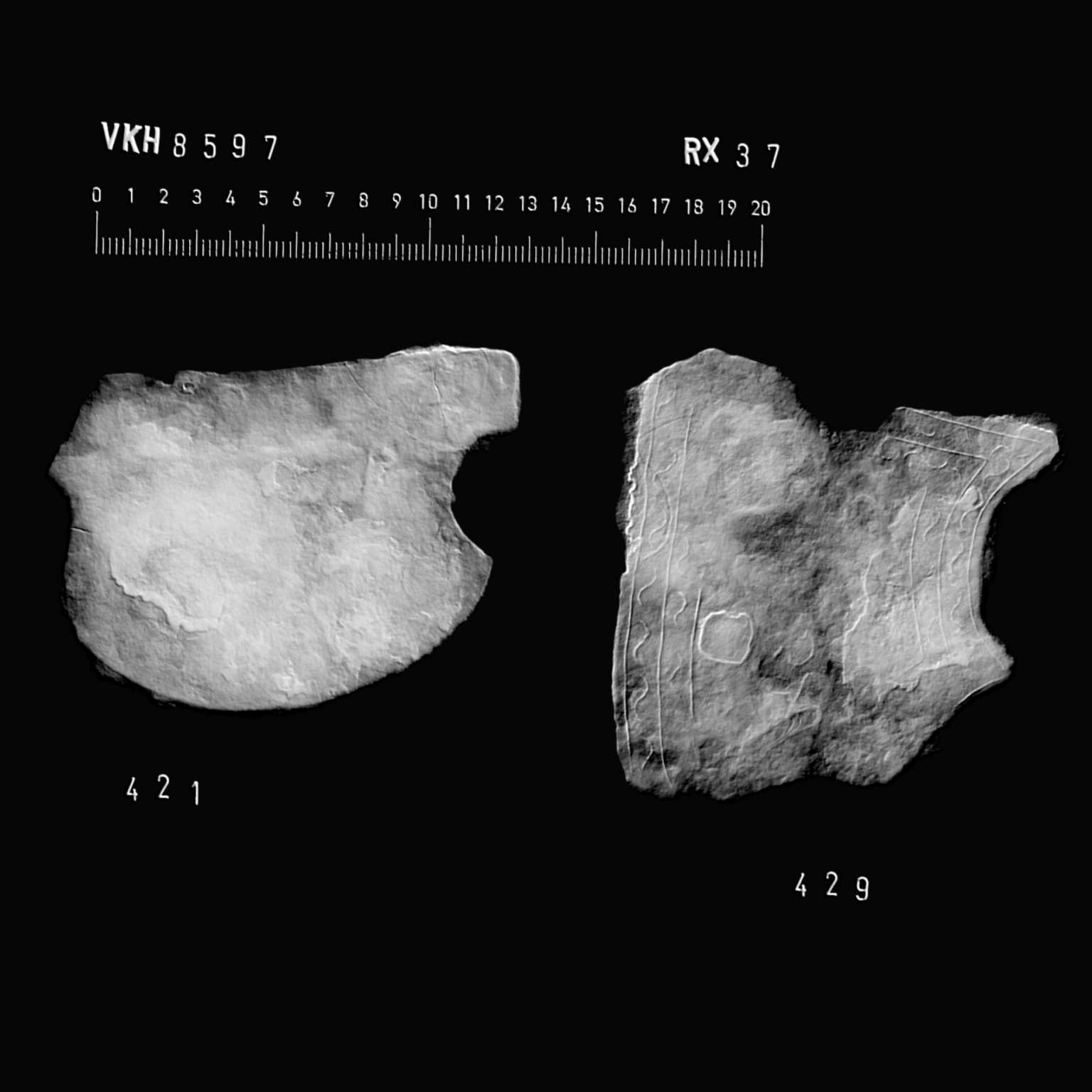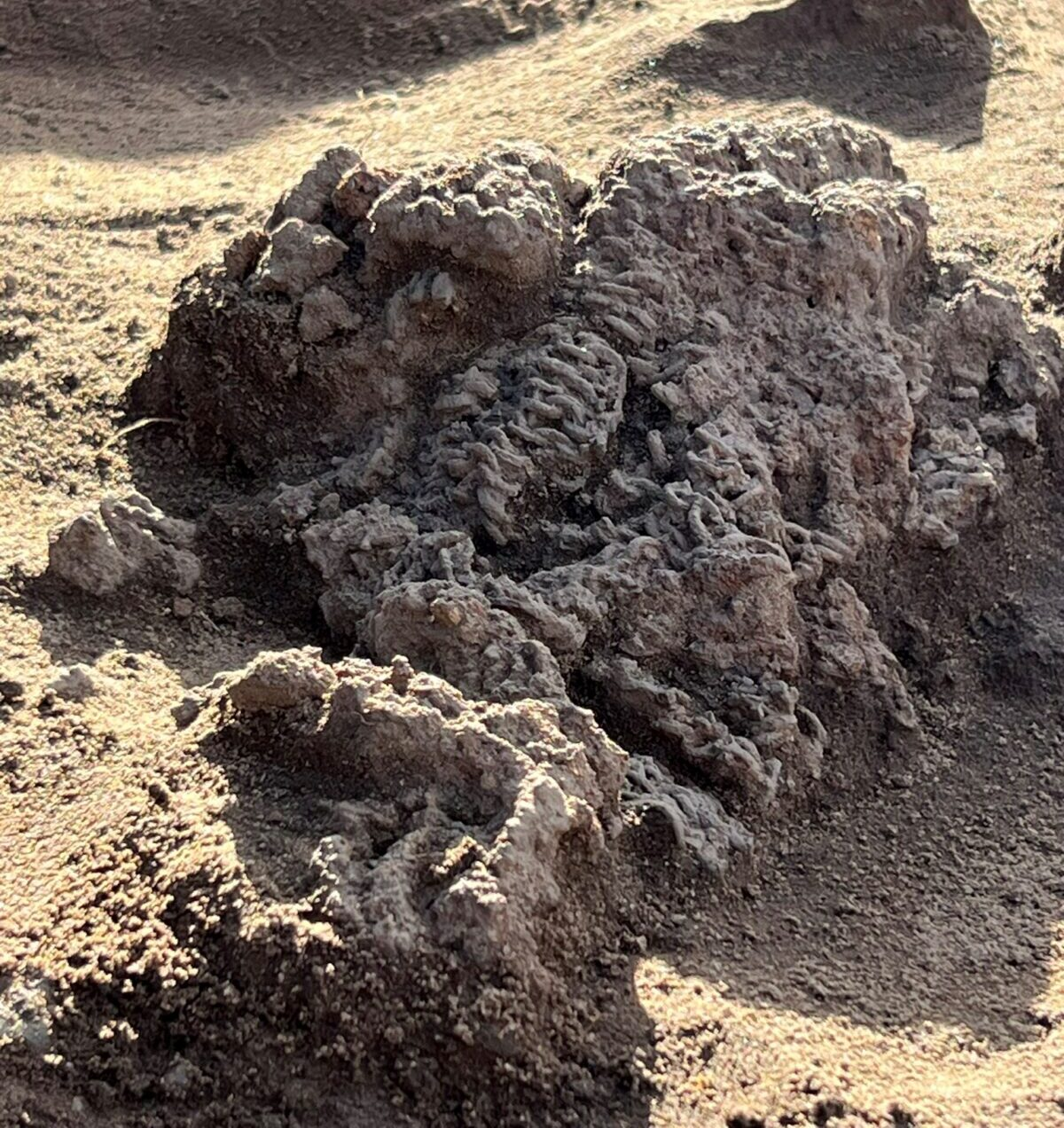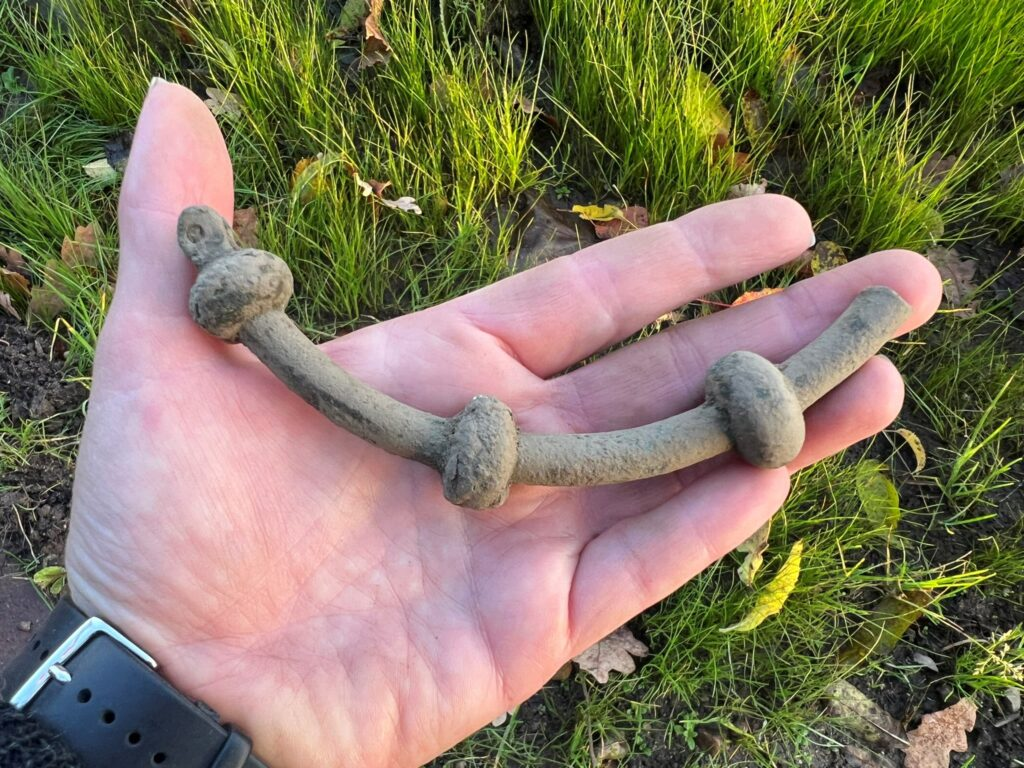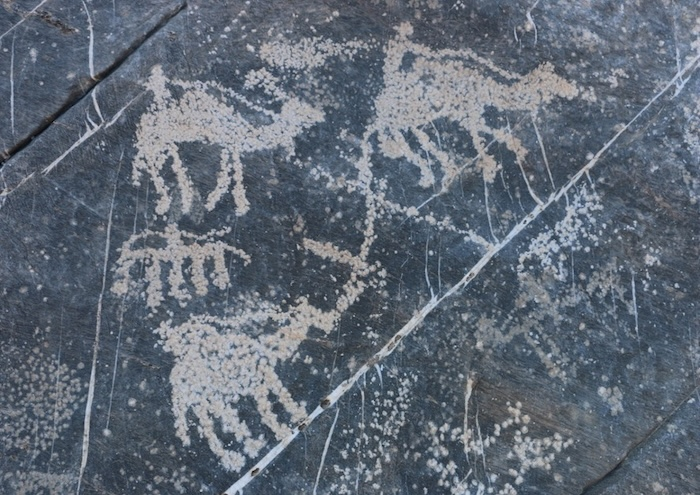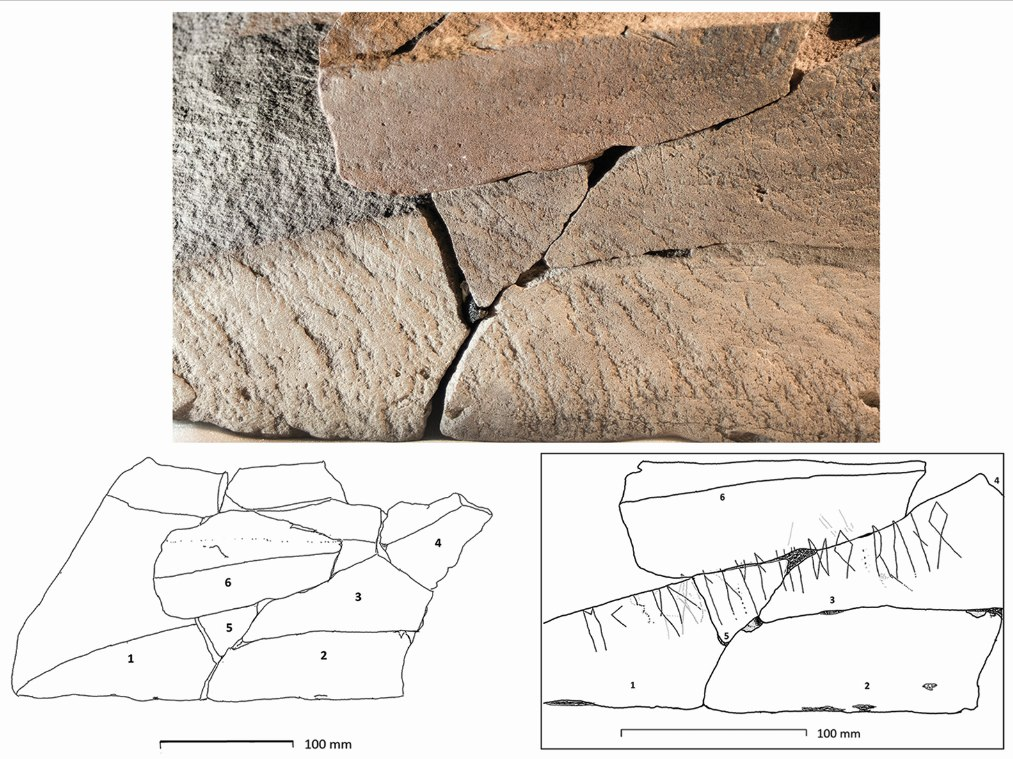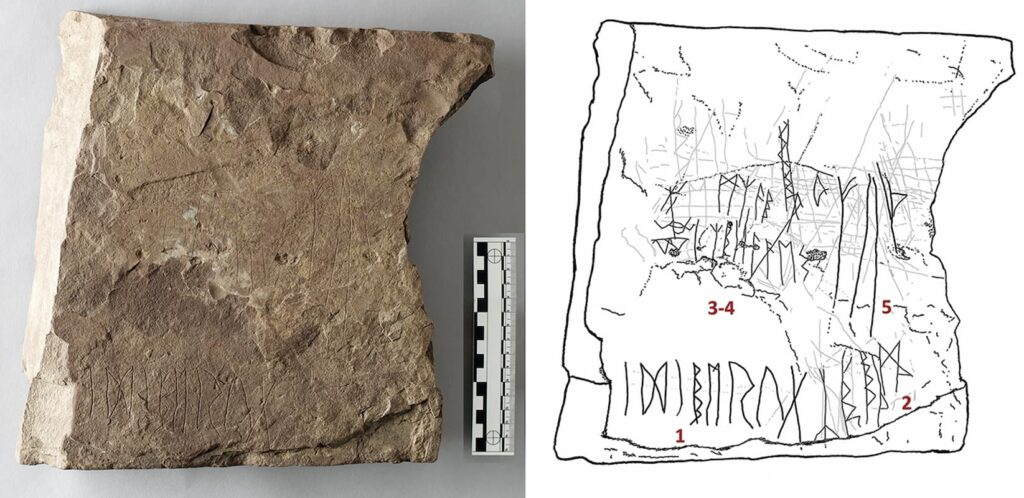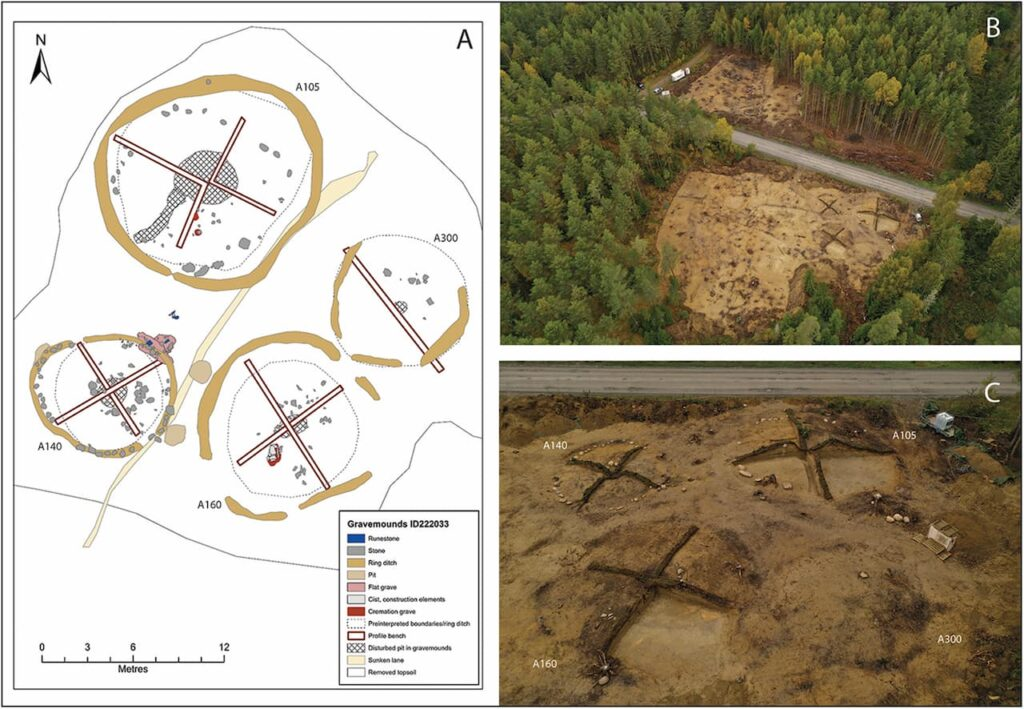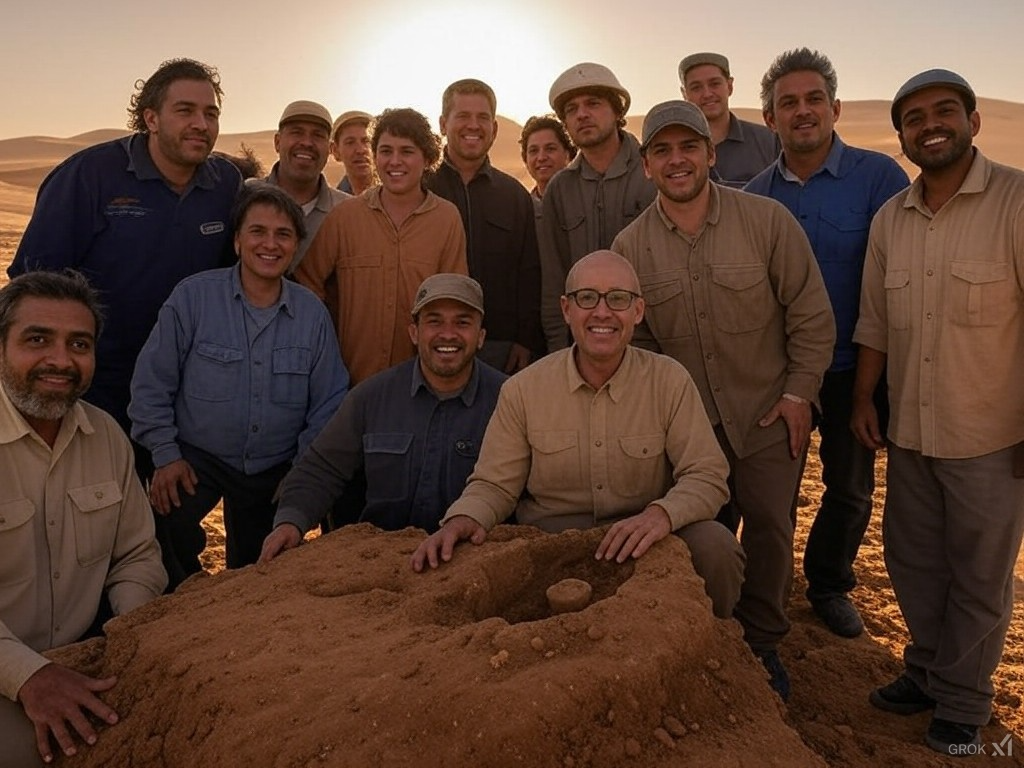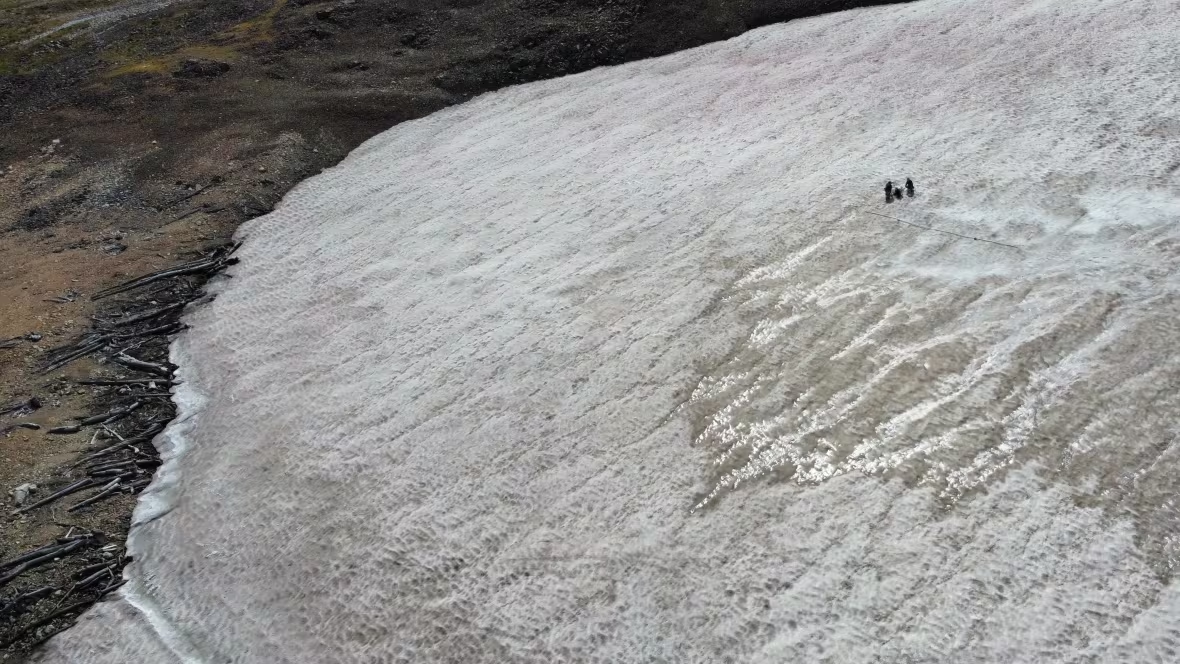A remarkable marble relief featuring a prancing horse, believed to be part of the Temple of Olympian Zeus in Agrigento, Italy, has been successfully recovered from the seabed. This discovery sheds new light on ancient Greek craftsmanship and Sicily’s rich historical legacy.
Discovery and Recovery
The relief was found submerged off the coast of San Leone near the mouth of the Akragas River. Although initially identified as an underwater archaeological artifact in late 2022, its significance was not fully understood until an in-depth study was conducted. Measuring two meters in length and 35 centimeters in thickness, the relief is believed to be crafted from Proconnesian marble.
3D image of the Temple of Olympian Zeus find in Italy, from October 2022. Credit: BCsicilia
A team comprising divers from the Carabinieri’s Diving Unit, specialists from the Superintendency of the Sea, and volunteers from BCsicilia worked together to recover the piece. The extraction process proved challenging, requiring three separate attempts due to turbulent sea conditions. Once retrieved, conservators began carefully removing the thick encrustations to reveal the intricate details of the sculpture.
Advanced Imaging and Analysis
In October 2022, under the direction of engineer Gaetano Lino, the artifact was extensively photographed to create a detailed 3D photogrammetry model. This imaging process provided a clearer view of the relief’s artistic elements, particularly the depiction of the horses, which highlight the skill and precision of ancient Greek sculptors.
Historical Significance of the Temple of Olympian Zeus
The Temple of Olympian Zeus is one of the most significant ancient Greek structures in Sicily. Situated in the Valley of the Temples in Agrigento, the site is part of Magna Graecia, a region that saw extensive Greek settlement from the 8th century BCE. This temple was the largest Doric temple ever constructed, though it was never completed and now lies in ruins.
Historians believe the temple was commissioned to celebrate the Greek victory at the Battle of Himera in 480 BCE, where forces from Akragas (Agrigento) and Syracuse triumphed over the Carthaginians led by Hamilcar. According to ancient Greek historian Diodorus Siculus, the temple was built using Carthaginian slave labor, primarily captured soldiers from the battle.
The recovery team with the find in Sicily. Credit: BCsilica
Polybius, another Greek historian, described Akragas in the 2nd century BCE, noting that while the Temple of Zeus remained unfinished, it was considered one of the grandest structures of its kind in Greece. Unfortunately, construction ceased permanently in 406 BCE when the Carthaginians conquered Akragas, leaving the temple roofless and incomplete.
A Window into the Past
The recovery of this stunning relief underscores Sicily’s deep connection to its Greek heritage. With numerous archaeological discoveries still waiting to be unearthed, the island continues to offer invaluable insights into the artistic, cultural, and historical achievements of the ancient world.
Starting February 8, 2025, the public will have the opportunity to view this extraordinary artifact at the Cultural Museum in Vejle, where it will be displayed alongside other significant finds, bringing ancient history to life for modern audiences.

